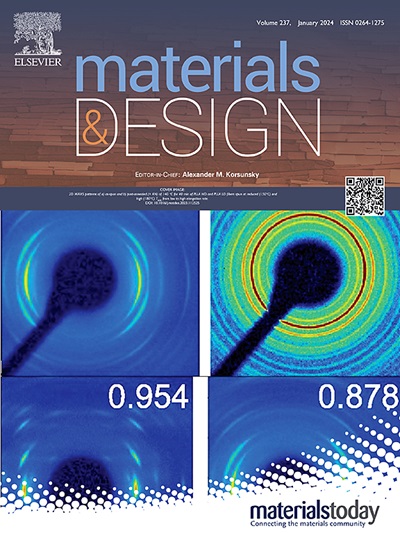Innovative crosslinking and foaming Strategies for Advancing biodegradable composite foams: Enhancing Foamability, Flexibility, and thermal insulation
IF 7.6
2区 材料科学
Q1 MATERIALS SCIENCE, MULTIDISCIPLINARY
引用次数: 0
Abstract
Ensuring thermal insulation stability under an extreme condition and optimizing energy utilization efficiency emerge as a pivotal concern. Bio-based poly(butylene adipate-co-terephthalate) (PBAT) foams, characterized by irreplaceable flexibility, biodegradability, and thermal insulation, are employed as a candidate for building insulation. However, the inadequate foamability and inescapable contraction issue of PBAT foam constrains its advancement in the domain of flexible thermal insulation. In this study, an innovative strategy was proposed wherein chain crosslinker ADR and corn-derived polylactic acid (PLA) are embedded within PBAT matrix, augmented by the physical foaming process, designed to alleviate the shrinkage and improve the thermal insulation of foams. It can be found that the addition of reactive functional groups enhances interfacial interactions of PBAT/PLA system, leading to a more cohesive and dispersed interface between the two phases. Moreover, the synergistic enhancement of physical foaming facilitates the attainment of the PBAT/PLA/ADR foam with a stable expansion ratio and ultra-low thermal conductivity, which can reach 17.4 and 37.5 mW/(m·K), respectively, 93 % and 14 % higher than those of PBAT foam. As a proof of concept, this study offers a novel environmentally-friendly strategy to develop recyclable, highly flexible, and thermally insulating biodegradable foam.

求助全文
约1分钟内获得全文
求助全文
来源期刊

Materials & Design
Engineering-Mechanical Engineering
CiteScore
14.30
自引率
7.10%
发文量
1028
审稿时长
85 days
期刊介绍:
Materials and Design is a multi-disciplinary journal that publishes original research reports, review articles, and express communications. The journal focuses on studying the structure and properties of inorganic and organic materials, advancements in synthesis, processing, characterization, and testing, the design of materials and engineering systems, and their applications in technology. It aims to bring together various aspects of materials science, engineering, physics, and chemistry.
The journal explores themes ranging from materials to design and aims to reveal the connections between natural and artificial materials, as well as experiment and modeling. Manuscripts submitted to Materials and Design should contain elements of discovery and surprise, as they often contribute new insights into the architecture and function of matter.
 求助内容:
求助内容: 应助结果提醒方式:
应助结果提醒方式:


